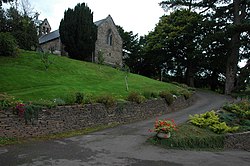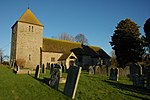Longtown, Herefordshire
Civil parishes in HerefordshireVillages in Herefordshire

Longtown is a linear village and parish in Herefordshire, England. The parish includes the village of Clodock and had a population in mid-2010 of 543, increasing to 620 at the 2011 Census.
Excerpt from the Wikipedia article Longtown, Herefordshire (License: CC BY-SA 3.0, Authors, Images).Longtown, Herefordshire
Geographical coordinates (GPS) Address Nearby Places Show on map
Geographical coordinates (GPS)
| Latitude | Longitude |
|---|---|
| N 51.952 ° | E -2.983 ° |
Address
HR2 0LS
England, United Kingdom
Open on Google Maps










